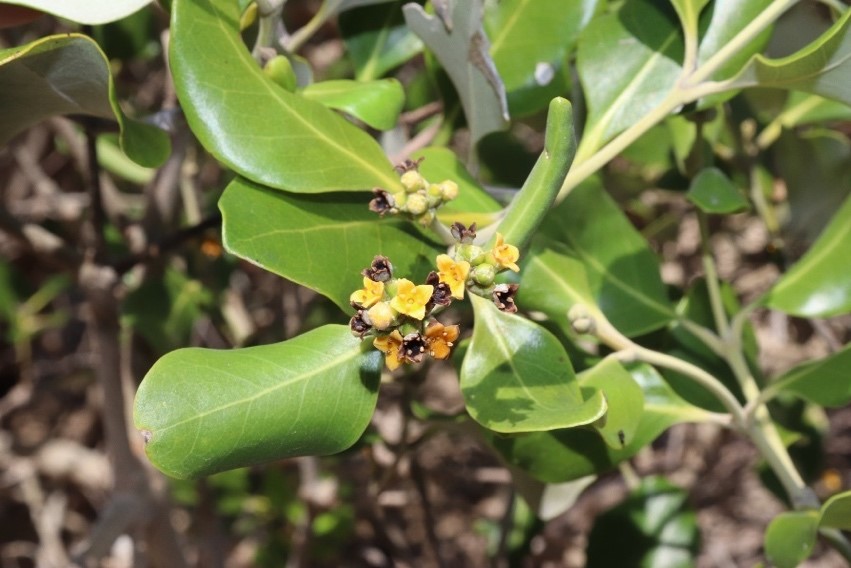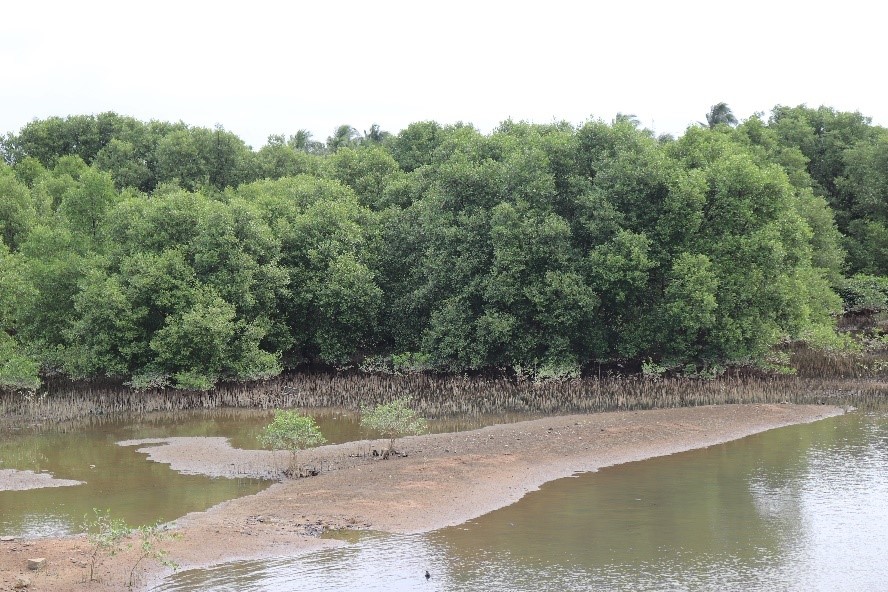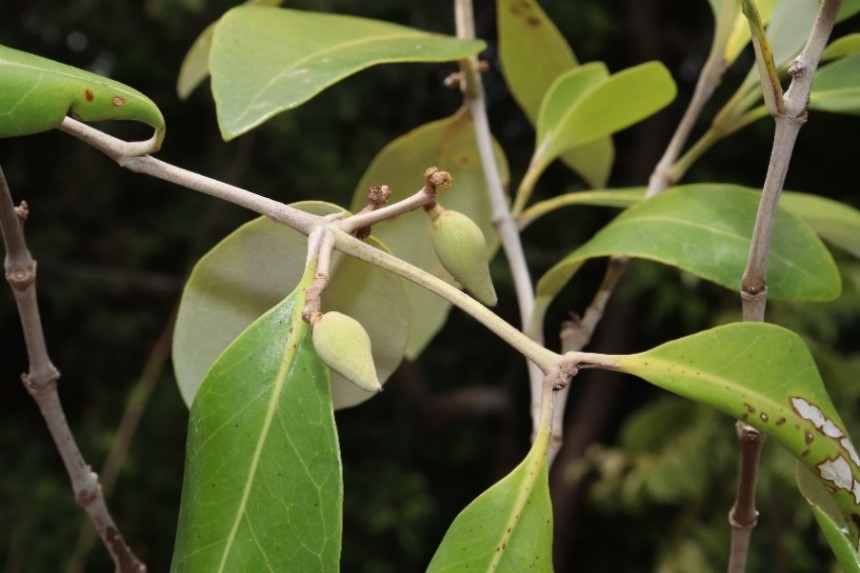Photos
Information
Avicennia alba Blume
Common name: Api api putih
Scientific name: Avicennia alba Blume
Familia: Acanthaceae (Avicenniaceae)
Uses:
The wood is light gray, soft, light. Used in construction, furniture and decorative.
According to Traditional medicine: The bark is made into a paste or soaked in wine and drunk, combined with it as a topical medicine to treat skin diseases and ulcers.
Morphology
Large tree, up to 16 m, DBH: 70 cm. The outer bark is greyish or brownish. Complex system of horizontal roots and pneumatophores (shoot-shaped), grow upright around the base.
The pointed leaves are lanceolate, simple and opposite, smooth, glossy green above and gray-white below.
The yellow to orange flowers, measure 5 mm across, and occur in 10-30 flowered clusters. Petal and stamens: four (4). Calyx: five (5) lobes. The conical, greyish-green fruit, gradually narrowed to
an extended beak-like tip, and measure up to 4 cm; each contains a single seed.
Flowering & Fruit: June-December.
Ecology
Pioneering species of mangrove swamps on sheltered shores, also in the more saline parts, along tidal river banks (on muddy soil or on mudflats). It is a typical element of the mangrove fringe
True mangrove species.
Distribution & Conservation Status
Distribution - in northern of Khanh Hoa province:
Mainly in Nha Phu lagoon, Ninh Hòa town.
Conservation status:
Low risk.





